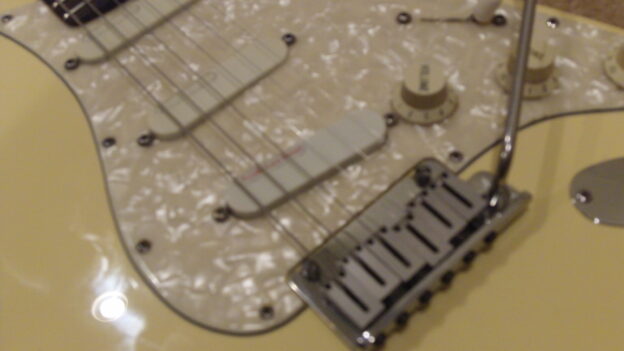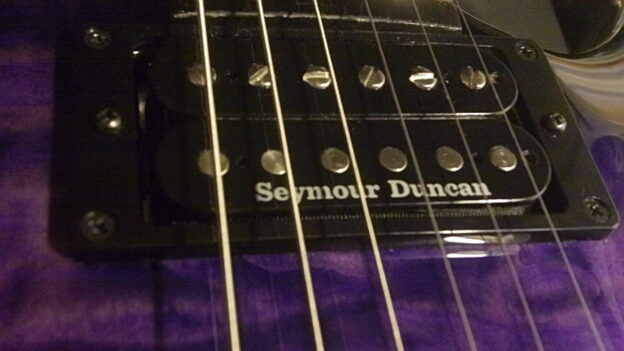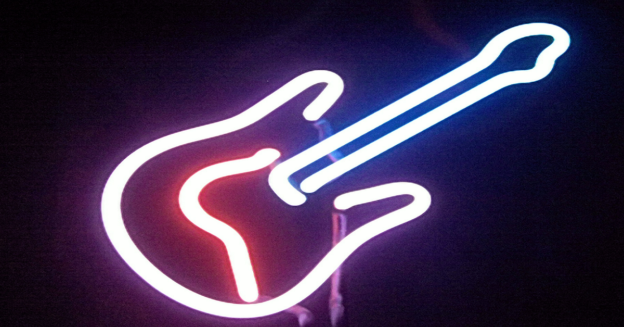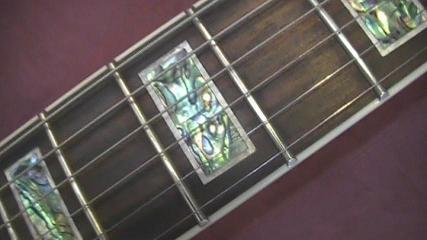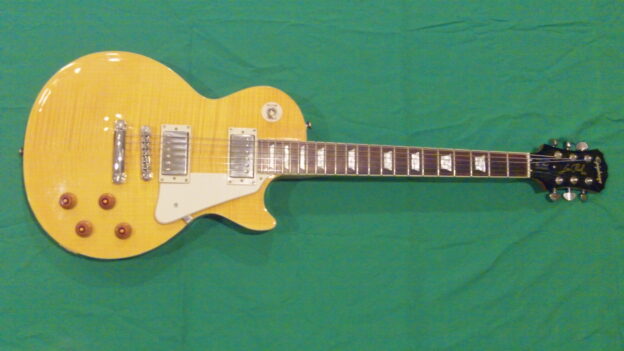By Chad Crawford PMI Guitar Instructor
1. Identify your goals – It is important at the outset of your musical endeavors, or if you are an intermediate player who has hit “the wall” then right now is the time for you, to determine exactly what it is you wish to accomplish. If you look around at the community of guitar players you will observe that most of the iconic players are known for one particular narrow range of musical style. By focusing on one narrow specialty they were able to develop the technique and knowledge pertinent to that specialty to a very high level. It is not necessary and not wise to attempt to master all styles of music, especially so for a hobbyist who is necessarily under time constraints. Determine what kind of music you most want to play and identify the technique and knowledge you need for that style. Then don’t squander precious time on things that do not apply to your goal. You can branch out later, but trying to tackle the whole field of musical endeavor from the outset is a sure plan for catastrophic frustration.
2. Listen to the music you enjoy – For some rare, unusually gifted musicians most of their musical inspiration seems to come from some secret well-spring within themselves. If you are one of these you would have known it before you were able to read, so if you are reading this then odds are you should not waste time trying to bypass the route most of us have to take to musical creativity: learning from those who have gone before. Identify those guitarists who you most enjoy listening to and wish to sound similar to, and spend plenty of time just listening to their songs. This will inspire you to practice, awaken your own creativity, and sharpen your discernment of pitch and time relationships.
3. Work with a good teacher – people who do not know much about making music commonly believe that music is simply an outgrowth of the personality, such that polluting the muse with organization and technical ideas is a sort of poison. That sort of thinking is why these people are not musicians, or not very good ones. For maximum results in the shortest possible time work with an expert coach who knows how to help you refine your goals, steer you toward the appropriate tools, and eliminate common useless side roads and pitfalls.
4. Master the basics – we all covet advanced playing skills and the accompanying freedom of expression. However, we don’t climb mountains by jumping from the valley straight to the peak. Rather we climb up one step at a time until we reach the peak. Trying to start out with guitar by tackling advanced songs from master guitarists is a sure path to overwhelming frustration and poor overall skills. Start with the basics, and practice them to the point that they come automatically. Then start working on the advanced stuff.
5. Practice well – We have all heard that the key to musical mastery is, “Practice, practice, practice.” While that apt cliche is indeed as true with music as it is with any realm of human endeavor, it fails to answer some very important questions: what to practice and how to practice. If you wish to become a great or even just a good musician, you should approach practice as a labor of love, with emphasis on labor. Practice should be an organized effort to achieve clearly defined goals, rather than another session of doodling with the same bits and pieces of songs from yesterday’s practice session. Random doodling is playing, not productive practice.
Here are some keys to effective practice:
-Assemble a practice schedule that addresses knowledge and technique relevant to your goals
-Follow the instructions – “playing by feel” is the shortest path to going in circles of self-sabotage with your practice routine. It may carry you for a while, but eventually it will lead to a dead end. Whatever manner of instructional materials you are using, practice according to the instructions. When you have mastered the piece of knowledge or technique at hand you will then be able to incorporate it into that body of things which you can effectively apply by feel.
-Cultivate good habits – habit is powerful either on your behalf or to your detriment. Habit will respond to whatever you put into it, either great things or mediocre ones. Utilize good technique, proven methods, and pay attention to details during practice. Make it a habit to push your mind and hands for an increment of improvement during every practice session, rather than habitually accepting yesterday’s routine as today’s standard.
-Memorization – memory, both physical and mental, responds best to focus, repetition, relation to the already known, and consistency. This is why it is very important to have an organized practice routine and to practice as often as possible. Shorter daily practices will yield better results than weekend marathon sessions.
6. Creativity – self-expression is impossible when one is utterly distracted by managing the basic facets of musicianship. Beyond that, creativity in music is rarely a matter of coming up with something that no one has ever thought of. That is not possible at this time in history. Creativity is more a matter of taking what is already known and putting a new spin on it, or assembling it in some novel way. Every human being is creative. What most folks consider a lack of creativity is really more a lack of technical skills distracting the attention away from what the internal creative muse is trying to deliver. If you want to experience the fullest of what your internal muse has to offer then get past stumbling over the basics as soon as possible.
7. Managing Frustration – mastering music is a complex long term endeavor, and some frustration with the process is inevitable. Don’t let it become a bigger thing in your mind that it is in reality. Feeling frustrated can not stop your progress in any way, unless you choose let it stop you from practicing. Avoid comparisons to other players. That has no bearing at all on your progress and so it is an utterly useless waste of time. Don’t allow perfectionism to creep into your thinking. Even pros make mistakes, and the music is still quite good despite the occasional mistake. Be sure you are following the instructions. Much undue frustration arises from trying to play by feel rather following the instructions. Allow yourself due credit for what you have accomplished, and measure your progress by objective standards rather than how you feel about your progress. Such feelings are typically unrealistically harsh and often adopt the feeling of frustration itself as a measure of progress, or lack thereof. Feeling frustrated has no bearing whatsoever on the objective reality of your progress, so don’t let your mind sabotage you with such tricks.
8. Managing Stage Fright – psychologists identify a phenomenon that occurs when we are trying to perform any kind of challenging task under direct observation. They call it “performance anxiety”. We musicians usually refer to it as “stage fright”. It is one of the most challenging aspects of music, but like all things musical it will respond to strategic efforts to bring it under control. Stage fright is a lower-level instinctive response to stress such that our bodies gear up to respond with vigorous action. Since we need to be relaxed and focused to perform music well, it is detrimental and even crippling to our musical abilities. However, as powerful as this instinct is we can learn to suppress it with practice. And that brings us to step 9 …
9. Play with others – music is ultimately a means of communication, and as such it is rather pointless to do it at all if we are not going to share it with others, kind of like learning a second language with no intent other than continually practicing it alone in front of a mirror. Playing with others is not only fulfilling but also helps identify weaknesses in our knowledge and technique for further study, allows us an opportunity to learn from others, and gives us experience in managing stage fright. It is also important in a general sense to include a social aspect to our experience of learning music, both in regards to celebrating our successes and sharing the burdens of the process. As soon as you can play basic chord rhythms you should seek opportunities to play with other musicians. If you have no musically inclined friends and are not involved in a good program of instruction including opportunities for group playing, then look online into the local fellowship communities such as Meetup where you can find amateur jam sessions that allow for folks with moderate skills to participate in a group setting.
Mastering music is not easy, but it is possible even for the hobbyist with time constraints. Take note of this “secret” of mastery – it is a path rather than a destination. Practice wisely and well, be patient, and never give up!
Copyright © 2005 Palmetto Music Institute. All Rights Reserved.

